May 27, 2025 | 19:59 GMT +7
May 27, 2025 | 19:59 GMT +7
Hotline: 0913.378.918
May 27, 2025 | 19:59 GMT +7
Hotline: 0913.378.918
Le Quang Thuyen's family in Da M'Ri town (Da Huoai District, Lam Dong District) is cultivating a durian orchard of 100 trees of Thai variety and another 70 of Ri6 variety. All durian trees have been harvested for four years during each of which the family could harvest over 20 tons of fruit.
“My family has been growing durian following VietGAP standards in recent years. The grass in our garden is not sprayed with pesticides like before but maintained to create moisture and create an environment for microorganisms to grow. If the grass grows too luxuriantly, we use a mower to cut off the tops,” Thuyen said.
According to him, the fertilizers and plant protection chemicals that are being used in his orchard are all included in the permitted list. In particular, the family is gradually switching to use microbial fertilizers and biological products.

Da Huoai District (Lam Dong Province) has about 4,500 ha of durian, of which 2,000 ha are for trading. Photo: Minh Hau.
Meanwhile, Nguyen Xuan Diep’s family in hamlet 1, Ha Lam Commune, Da Huoai District has been growing durian since 1997 on a total area of 3ha, intercropped with mangosteen.
Diep said his family collects about 40-50 tons of durian per year, which is sold to traders for export to China.
To ensure the quality of durian to meet the needs of the market, his family has adopted the VietGAP production process since 2016. They currently continue to follow the standards and organic production process to improve their products and aim at export to China.
Also in Da M'Ri town, Da M'Ri Agricultural Cooperative is one of the largest durian farmer organizations in Da Huoai District.
The cooperative now has about 80 members planting durian on a total area of about 150 ha, among which 80 hectares are under harvest and the rest is in the basic construction stage.
According to Nguyen Thanh Son, Director of the cooperative, its output reaches over 800 tons/year and most of this amount is exported to the Chinese market via border trade.
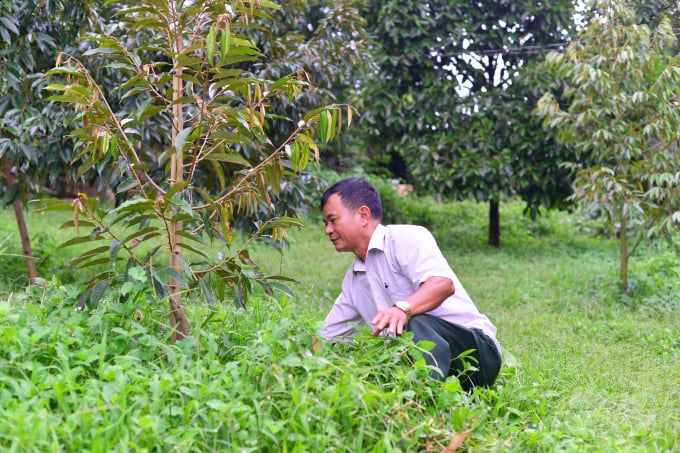
Da Huoai District currently has 800ha of durians that meet VietGAP and GlobaGAP standards. Photo: Minh Hau.
Despite such small-scale exports to the Chinese market, durian production has always been carried out by Da M'Ri Cooperative in accordance with VietGAP standards.
Specifically, its members must set up planting space according to standards, build warehouses and storage areas for agricultural materials and must build wastewater treatment areas.
At the same time, the production must be recorded in a diary and the parameters of the amount of fertilizers and pesticides must comply with the set process. Measures to check and monitor pesticide residues must be carried out regularly.
Nguyen Thanh Son, Director of Da M'Ri Cooperative said: "Currently, the cooperative's durian production process is stable and the product quality has reached the standards for export. In the future, we will focus on organic production to access the market."
According to the Department of Agriculture and Rural Development of Da Huoai district, the durian area of the whole district is about 4,500ha, about 2,000 hectares of which is for trading. Most of the cultivation area is properly exploited and meets quality standards for export.
As the biggest problem is that the planting area code has not been granted yet, the agricultural sector of Da Huoai district has been surveying and asking the Lam Dong Department of Agriculture and Rural Development, Department of Plant Protection to consider and issue the code soon to complete the export process
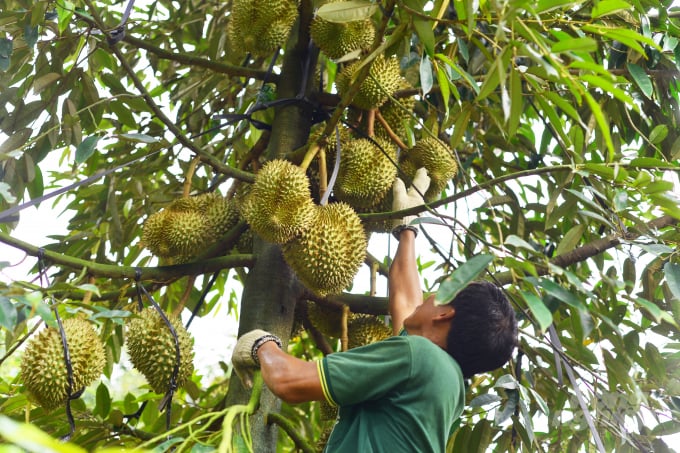
Durian is the main crop of Da Huoai District, with the annual output of 25,000 - 30,000 tons. Photo: Minh Hau.
Nguyen Xuan Diep from hamlet 1, Ha Lam Commune, Da Huoai District said the issue of planting area codes is an important factor for export, so the family has participated in durian production cooperatives in the locality to carry out the procedures to apply for a planting area code.
"The agricultural sector has conducted a survey and guided us to carry out the necessary procedures. Hopefully everything will go smoothly for us to be granted a planting area code in the near future," said Diep.
Similarly, Nguyen Thanh Son, Director of Da M'Ri Cooperative, said the unit has also carried out the procedures to apply for a code of planting area for the cooperative. According to him, this is the final criterion for the cooperative's durian to be officially exported to China.
Pham Quang Chien, Head of the Department of Agriculture and Rural Development of Da Huoai District said the district has taken steps to ensure the source of durian products for official export to the Chinese market in the past two years.
Specifically, the agricultural sector has supported households and cooperatives to produce durian following good agricultural standards such as VietGAP, GlobalGAP and organic standards. They have also implemented procedures for granting planting area codes to businesses, cooperatives, and farmers engaged in durian production and trade.
According to Chien, China is a big market and when this market opens to import durian officially, it will be a favorable starting point for Da Huoai durian in particular and the whole country in general.
When locally-produced durian is officially exported to this market, traders and purchasing units of the fruit will have certain outsourcing contracts for farmers and local cooperatives, which will stabilize durian production in the region, he added.
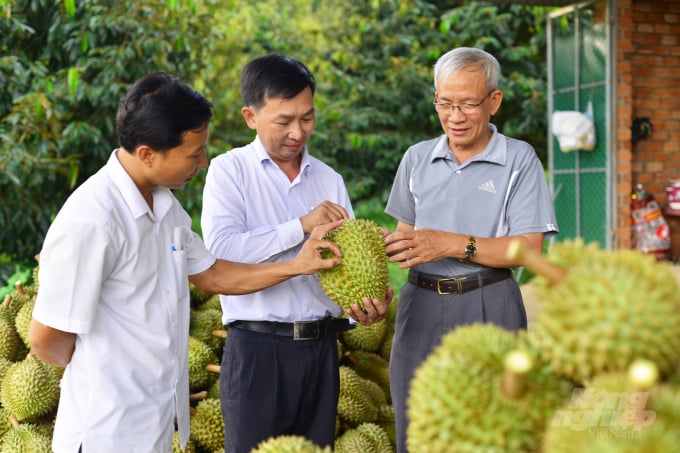
In recent years, the agricultural sector of Da Huoai District has recommended and supported locals to conduct durian production according to VietGAP and GlobalGAP standards to access the market. Photo: Minh Hau.
"The district's agricultural sector is encouraging farmers, cooperatives and businesses to carry out procedures of registration of planting area codes.
For small-scale production households, we recommend them join or form cooperative groups to facilitate registration of planting area codes," Chien said, adding that such issue encountered many problems so the District People's Committee Da Huoai has requested measures to support and remove difficulties.
Currently, the agricultural sector of Da Huoai District has completed a number of documents and submitted them to the Plant Protection Department for consideration of issuing a planting area code.
Translated by Phuong Ha
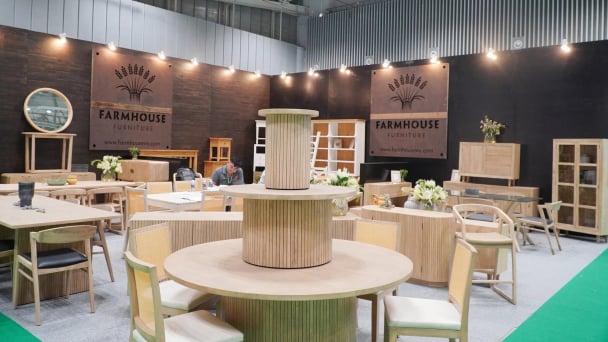
(VAN) The U.S. is tightening import tariffs and origin inspections, requiring Vietnamese businesses to proactively prepare in terms of legal compliance, supply chains, and appropriate export strategies.

(VAN) Russia more than doubled halal poultry exports in 2024, aiming to further boost sales by the end of the decade.
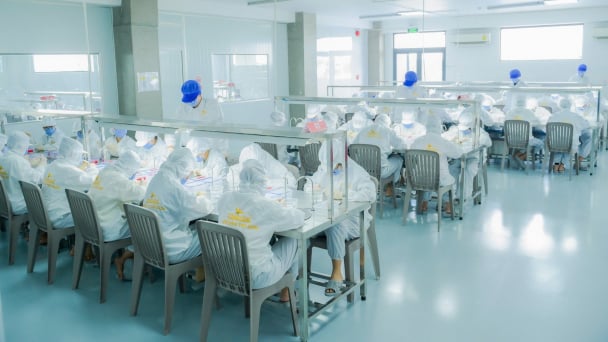
(VAN) Amidst the current intense competition, businesses must establish sustainable linkages, prioritize technological investments, build brand identity, and obtain international certifications.
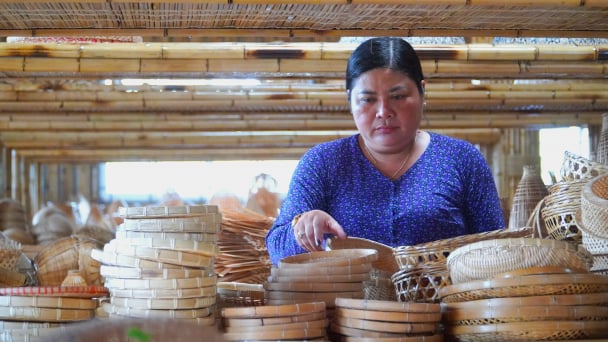
(VAN) As director of the Thuy Tuyet Bamboo and Rattan Handicraft Cooperative in Soc Trang, she has revitalized a traditional craft, generating sustainable livelihoods for hundreds of workers - particularly from the Khmer ethnic minority.
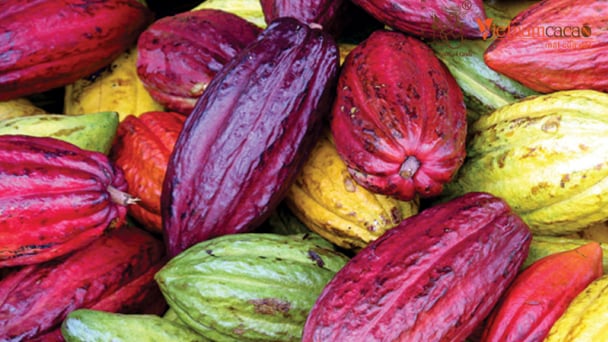
(VAN) Vietnam has been classified as a ‘low-risk’ country for deforestation under EUDR, granting local producers a strategic edge in sustainable market development.
/2025/05/19/2617-14-211139_18.jpg)
(VAN) Vietnamese bird's nest enterprises are eager to access the promising Chinese market; however, only those with thorough preparation, truthfulness, strict regulatory compliance, and consistent product quality will be positioned for success.
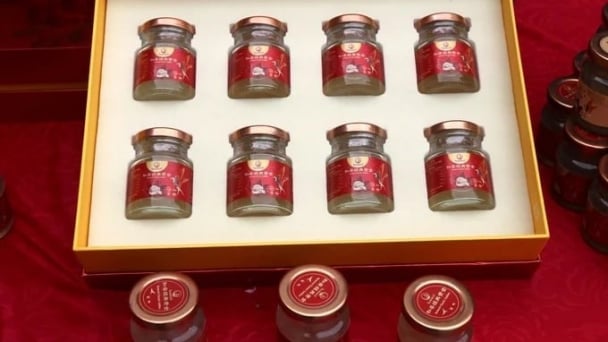
(VAN) For Vietnamese bird's nest products to penetrate deeply and sustainably into the Chinese market, it requires not only product quality but also strict compliance with the regulations on quarantine, traceability, and food safety.